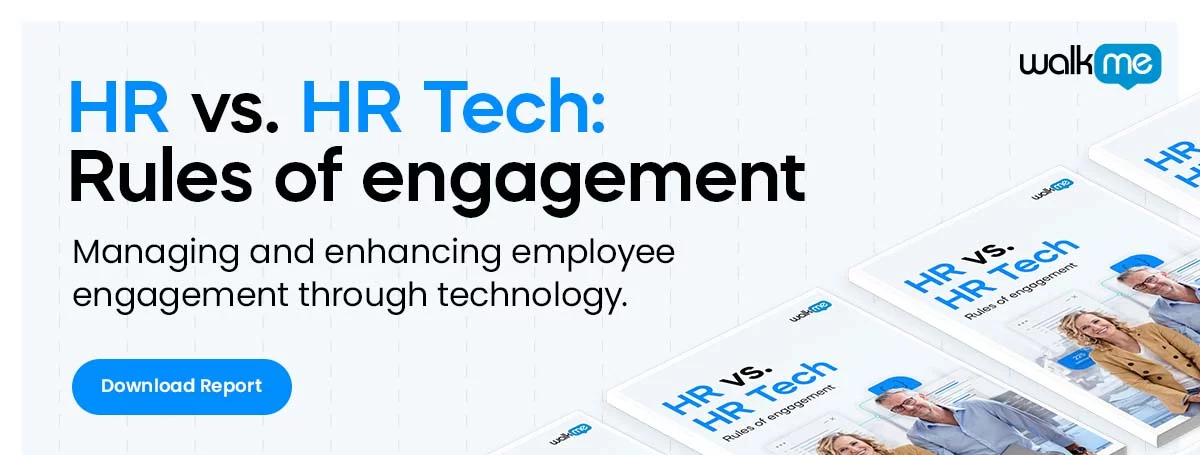
Knowing how to improve employee engagement is essential for any manager.
Employee engagement, after all, determines how productive the workforce is. It also affects other employee metrics such as employee retention and employee sentiment. These, in turn, can affect the costs associated with hiring new employees, the work environment, the employer brand, and more.
Below we will look at a few strategies for increasing engagement and, as a result, some of the metrics covered above.
How to Improve Employee Engagement
Here are a few tips for improving employee engagement:
Assess your workforce
Disengagement is common among workers around the world, but it is important to remember that the causes of that disengagement can vary.
Every workplace is different after all, which means that each company faces its own unique challenges when it comes to improving engagement.
There certainly are common factors, such as poor management, which Gallup claims is one of the biggest drivers of disengagement.
Also, it is important to remember that certain factors, such as job-person fit, are outside the organization’s control.
For this reason, it is important to use employee surveys to determine exact causes of disengagement within your own workplace. Address the most common issues, such as management, as well as issues that are identified by managers. Then offer open-ended questions that employees can answer themselves so they can provide their own insights and input.
Create an employee experience management program
An employee experience management program is a structured program that focuses on analyzing, understanding, and improving the employee experience.
As a result, HR managers and managers can gain deeper insights into employees’ needs and the causes behind trends within the workplace.
Importantly, in this case, an employee experience management program can tell managers why employees are engaged or disengaged.
After identifying problems in the workplace, employee experience managers can then propose solutions, implement them, and optimize them over time.
A few examples of areas that employee experience managers focus on include:
- The physical workplace
- The digital workplace
- The impact of remote and hybrid working
- Employee sentiment
- Day-to-day workflows
Depending on the size of the organization, the employee experience management program may be part of HR, or it may consist of a dedicated person or team.
Simplify the digital employee experience
Today’s workforce spends the majority of the time working in digital software. The digital side of their workplace experience, therefore, has a significant influence on engagement, disengagement, and productivity, and more.
When it comes to the digital employee experience, several factors influence engagement, such as:
- Digital skills and the digital skills gap
- The organization’s digital tools
- Software adoption, onboarding, and training programs
In general, the simpler the digital experience and the more digitally savvy employees are, the better their experience will be.
The HR software company Personio found that “fragmentation frustration” – the complexity of using too many tools in the workplace – has become a major pain point for many employees.
WalkMe, likewise, has identified software-related frustration as being a major barrier to learning, engagement, and productivity. That frustration, which can be caused by complexity or the difficulty of learning new tools, among other things, can be remediated by simplifying the digital experience, using modern tools in the workplace, and offering robust training options to employees.
Offer training and career development options
Employee training has a significant impact on skill levels, which in turn affects workflows, engagement, and productivity.
There are several reasons why training impacts engagement:
- Employees who lack the proper skills will be more likely to become frustrated on the job
- Studies have shown that employees want to be stimulated at work, and bored employees are more likely to start looking for other jobs
- Upwardly, mobile employees want to work at companies that will help support their career development and their ambitions
Business leaders have also identified the need for skilled employees in the workplace. A survey from PwC, for instance, found that employees who lack the proper skills inhibit innovation.
Hire selectively
Another factor that affects engagement is how well employees fit into the work environment. And that fit can be evaluated across several different dimensions.
Areas to pay attention to include:
- Culture fit
- Job fit
- Skills and capabilities
Importantly, fit not only affects an individual’s engagement, it also affects the work environment. An individual’s engagement level may seem irrelevant to the workforce as a whole, but when the individual mismatches occur frequently, disengagement can add up and impact entire teams.
Final Thoughts
When it comes to employee engagement, it is important not to focus on one specific area, such as employee skills or the work environment.
Instead, it is best to analyze as many factors as possible and think outside the box. As we have seen above, management quality, the quality of digital workplace tools, employee training programs, job-person fit, and many other factors can influence engagement.
The best place to begin, therefore, is to perform assessments, as mentioned above, and create a structured program designed to continually improve the employee experience and employee engagement.
WalkMe Team
WalkMe spearheaded the Digital Adoption Platform (DAP) for associations to use the maximum capacity of their advanced resources. Utilizing man-made consciousness, AI, and context-oriented direction, WalkMe adds a powerful UI layer to raise the computerized proficiency, everything being equal.



